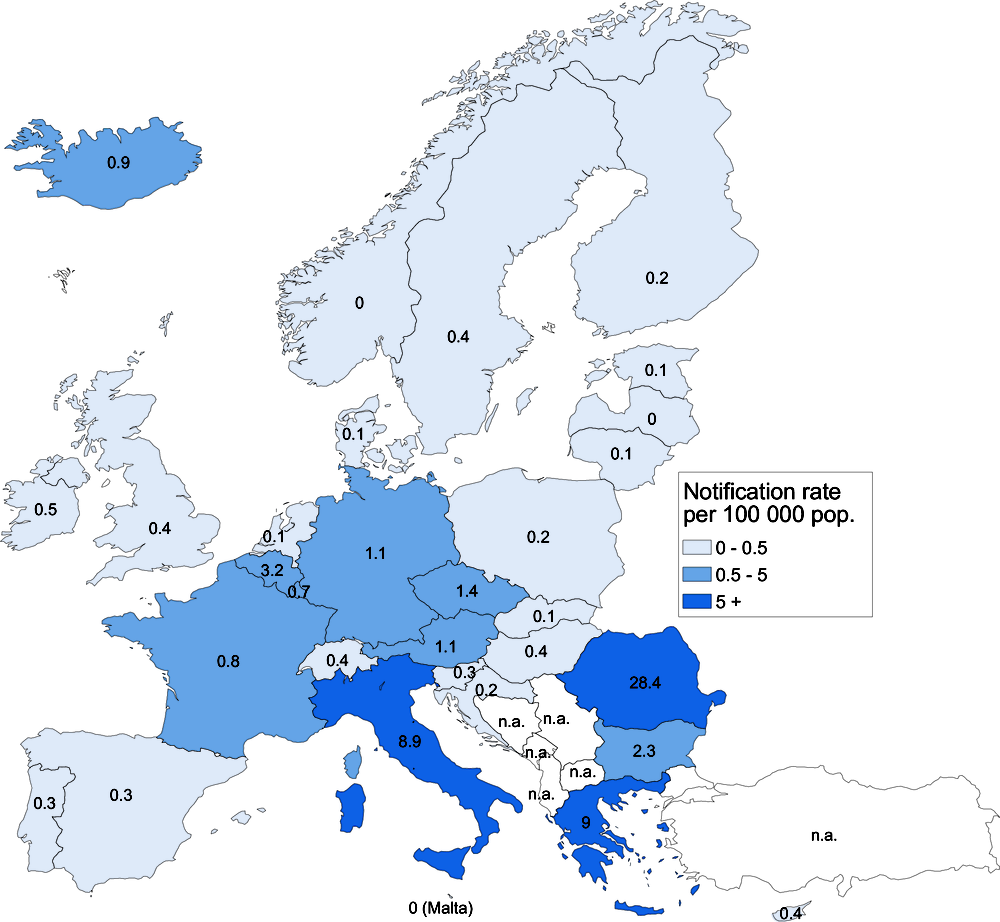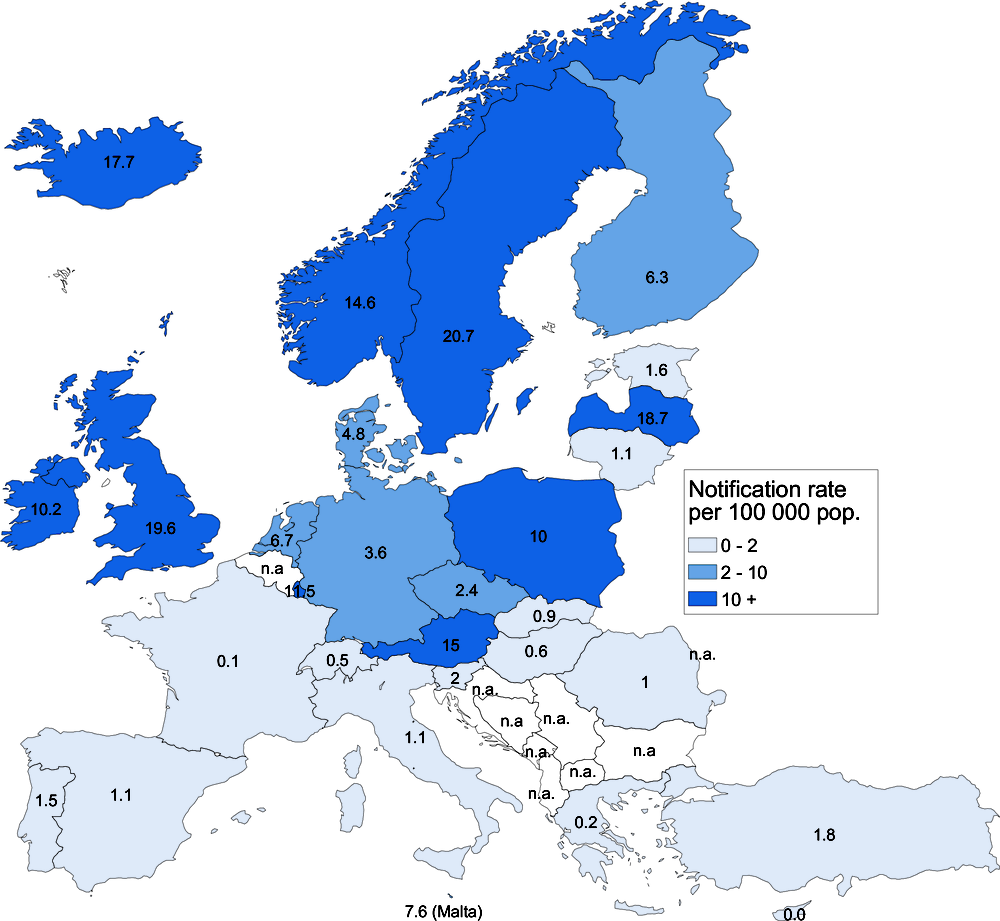Notified cases of vaccine-preventable diseases
Communicable diseases, such as measles, hepatitis B and many others, pose major threats to the health of European citizens, although vaccination could efficiently prevent these diseases (EC, 2018). Measles, a highly infectious disease of the respiratory system, is caused by a virus. Symptoms include fever, cough, runny nose, red eyes and skin rash. It can lead to severe health complications, including pneumonia, encephalitis, diarrhoea and blindness.
13 475 cases of measles were reported to the European Surveillance System by the 30 EU/EEA countries from May 2017 to May 2018, up from 8 523 cases for the preceding 12-month period. The average rate in the EU in 2017 was 2.2 cases per 100 000 population, but with wide variations across countries (Figure 3.24). Romania reported the highest number of new cases and highest rate (28.4 cases per 100 000 population). Greece and Italy followed with rates higher than 8 per 100 000 population. An outbreak of measles started in 2016 in Romania and smaller outbreaks, amplified by low vaccination coverage, stemmed partly from it in a few other countries. In most countries where vaccination coverage is high, very few cases of measles were reported in 2017 (see indicator on vaccination in Chapter 6).
Vaccination against measles is very effective: the vast majority of newly diagnosed people were not vaccinated. Although 45% of measles cases occurred among people aged 15 and older, most cases are among infants under one year old, as they are often still too young to have received the first dose of vaccine. Unvaccinated infants are generally protected against measles when at least 95% of population have received the second dose of vaccine (ECDC, 2018a).
Hepatitis B is a liver infection caused by a virus transmitted by contact with blood or body fluids of an infected person. People who are infected can go on to develop a chronic infection, especially those who are infected at younger ages. People with chronic hepatitis B are more likely to suffer from liver cirrhosis and liver cancer.
More than 29 300 hepatitis B cases were reported in EU/EEA countries in 2016 (ECDC, 2018b). This equals a rate of 6 cases of hepatitis B per 100 000 population across EU countries in 2016. Sweden, the United Kingdom and Latvia had the highest notification rates, with more than 18 cases per 100 000 population (Figure 3.25). The rates are also high in Austria, Ireland, Iceland and Norway. The higher number of reported cases in these countries is due at least partly to a more comprehensive surveillance and reporting system that includes both acute and chronic cases. The vast majority of cases reported in these countries are chronic cases. Many countries with low rates such as France, Greece and Lithuania do not report such chronic cases.
Reported cases of hepatitis B are higher in men than in women. About one-third of all reported hepatitis B cases occurs among people aged 25-34. For acute infections, heterosexual transmission is the most common route of transmission, followed by nosocomial transmission, transmission among men who have sex with men, injuries and drug injection. Mother-to-child transmission is the most common route for chronic cases (ECDC, 2018b). The most effective prevention is vaccination (see indicators on childhood vaccination in Chapter 6).
Mandatory notification systems for communicable diseases, including measles and hepatitis B, exist in most European countries, although case definitions, laboratory confirmation requirements and reporting systems may differ. Measles and hepatitis B notification is mandatory in all EU member states. Caution is required in interpreting the data because of the diversity in surveillance systems, case definitions and reporting practices (for example, several countries only collect data on acute cases, not chronic cases). Variation between countries also likely reflects differences in testing as well as differences in immunisation and screening programmes.
References
EC (2018), Proposal for a council recommendation on strengthened cooperation against vaccine preventable diseases, European Commission, Brussels.
ECDC (2018a), Measles outbreaks still ongoing in 2018 and fatalities reported from four countries, accessed 27 June 2018.
ECDC (2018b), Annual epidemiological report for 2016 Hepatitis B, Stockholm.


